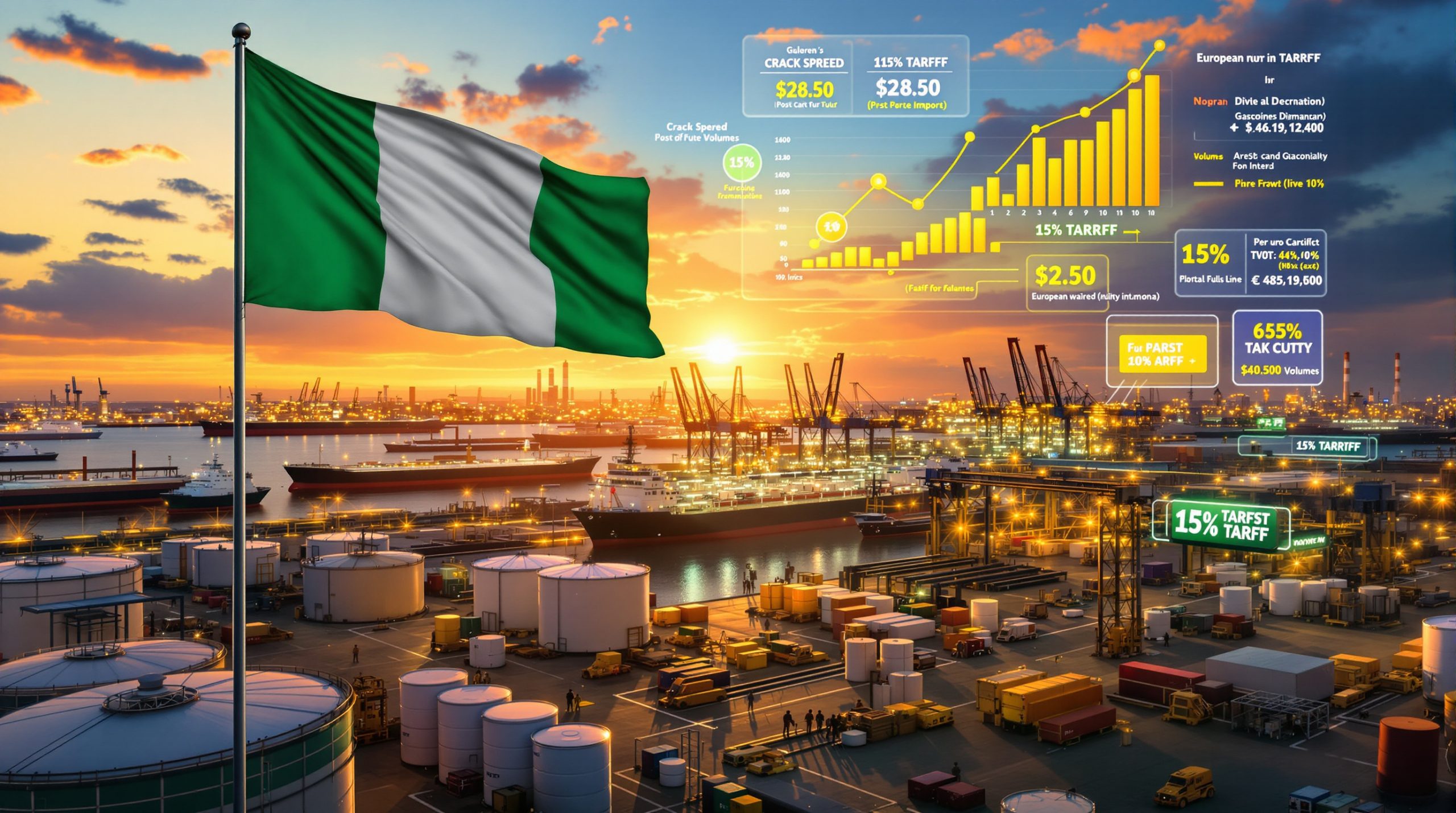How Solvay's Rare Earth Supply Deals Are Transforming Global Mineral Security Networks
The Belgian chemical giant Solvay has positioned itself at the center of a dramatic shift in rare earth supply chain dynamics through a series of strategic partnerships that extend from North American manufacturers to Australian mining operations. These Solvay rare earths supply deals represent more than simple commercial agreements; they constitute a fundamental restructuring of how Western nations approach critical mineral independence in an increasingly fragmented global marketplace. Furthermore, this positioning reflects the broader mining industry evolution occurring across global supply networks.
The company's emergence as one of the few non-Chinese entities capable of complex rare earth separation has created new pathways for manufacturers seeking alternatives to traditional supply routes. This positioning becomes increasingly valuable as geopolitical tensions expose the vulnerabilities inherent in concentrated supply networks, particularly those dominated by single geographic regions.
Strategic Foundation of Solvay's Supply Network Expansion
Solvay's approach to rare earth supply agreements reflects a sophisticated understanding of modern supply chain vulnerabilities. The company has deliberately constructed a multi-regional network that spans continents, creating redundancy mechanisms that traditional single-source arrangements cannot provide.
The strategic importance of these partnerships extends beyond immediate commercial benefits. By establishing processing capabilities outside of Asia, Solvay has created what industry analysts describe as critical infrastructure for Western industrial sovereignty initiatives. This infrastructure becomes particularly valuable when considering the specialised nature of rare earth processing, which requires both technical expertise and substantial capital investment.
The company's La Rochelle facility in France launched modest processing operations for permanent magnet minerals in April 2025, marking a significant milestone in European rare earth processing capabilities. This facility represents one of the few operational rare earth separation plants outside of Asian control, positioning it as a strategic asset for both commercial and national security purposes. In addition, this development supports broader defence critical minerals supply chain initiatives.
US Manufacturing Partnerships Address Critical Supply Vulnerabilities
Noveon Magnetics Supply Agreement
The partnership with Texas-based Noveon Magnetics focuses on delivering four essential rare earth elements: neodymium, praseodymium, dysprosium, and terbium oxides. These materials, commonly referred to as NdPr and DyTb in industry terminology, constitute the foundation for high-performance permanent magnet production.
Noveon Magnetics achieved a significant milestone by commencing commercial sales of sintered neodymium-iron-boron (NdFeB) magnets in 2023, establishing itself as a domestic US producer in a market previously dominated by overseas suppliers. The timing of Solvay's supply commitment aligns with the rapid expansion of applications requiring these advanced magnetic materials.
The technical specifications of NdFeB magnets make them indispensable for modern technological applications. These magnets provide exceptional magnetic strength while maintaining relatively compact dimensions, making them ideal for electric vehicle motors, wind turbine generators, and advanced electronics systems. The automotive sector's transition toward electrification has created unprecedented demand for these materials, with each electric vehicle requiring approximately 1-2 kilograms of rare earth magnets for motor applications.
Permag and High-Temperature Applications
Solvay's agreement with Permag addresses a specialised segment of the rare earth market through samarium oxide supply arrangements. This material will undergo conversion to samarium metal by British firm Less Common Metals, creating a tri-national supply chain that spans Belgium, the United States, and the United Kingdom.
Samarium-based magnets possess unique properties that distinguish them from neodymium-based alternatives. These magnets maintain their magnetic characteristics at extremely high temperatures, often exceeding 300°C (572°F), without significant performance degradation. This temperature stability makes samarium magnets essential for defence applications, aerospace systems, and nuclear reactor components where operational environments demand exceptional material performance.
The defence sector's requirements for samarium-based magnets extend beyond temperature resistance. Military applications often demand magnets that can withstand extreme shock, vibration, and electromagnetic interference whilst maintaining precise performance characteristics. These stringent requirements create a specialised market segment where supply chain reliability and material quality become critical factors.
Recycled Material Integration Transforms Supply Chain Sustainability
Cyclic Materials Partnership Framework
The integration of recycled rare earth materials through Solvay's partnership with Canadian firm Cyclic Materials introduces a circular economy component to traditional mining-based supply chains. This arrangement, involving recycled mixed rare earth oxide (rMREO) shipments beginning in late 2024, addresses both environmental concerns and supply security objectives.
The recycling of rare earth elements presents unique technical challenges compared to conventional metal recovery processes. Rare earth recycling typically involves extracting materials from end-of-life products such as hard disk drives, electric motors, and electronic waste. The complex chemical separation required to purify these materials from mixed waste streams demands sophisticated processing capabilities. However, this approach complements existing battery recycling solution initiatives across the industry.
Recovery rates for rare earth recycling vary significantly depending on source materials and processing methods. Current industry data suggests that neodymium recovery rates from permanent magnets can reach 85-95% efficiency under optimal conditions, whilst more complex mixed waste streams may yield recovery rates of 60-75%. These efficiency levels, whilst lower than primary mining operations, provide valuable supplementary supply sources.
Environmental and Economic Benefits
The environmental impact reduction achieved through rare earth recycling extends beyond simple waste diversion. Primary rare earth mining operations typically generate 8-12 tons of waste rock per ton of rare earth concentrate produced. Additionally, the chemical processing required for primary materials consumes substantial quantities of water and energy whilst producing acidic waste streams.
Recycled rare earth processing can reduce carbon emissions by 40-60% compared to primary production, according to industry lifecycle assessments. Water consumption decreases by approximately 30-40%, whilst toxic waste generation drops significantly due to the elimination of mining and initial beneficiation processes.
European Production Capabilities Reshape Regional Supply Dynamics
La Rochelle Facility Operations
Solvay's La Rochelle facility represents a cornerstone of European rare earth processing independence. The plant's capability to produce both NdPr and samarium oxide immediately upon demand demonstrates the strategic value of having established processing infrastructure ready for rapid scaling.
CEO Philippe Kehren confirmed that the facility can commence NdPr and samarium oxide production "very soon" from existing capabilities, whilst DyTb production will require several months of preparation before starting "in the course of 2026." This phased approach allows Solvay to optimise production processes whilst gradually expanding output to meet growing demand.
The facility's design incorporates advanced separation technologies that can process various feedstock types, from traditional mineral concentrates to recycled materials. This dual-source capability provides operational flexibility that becomes crucial when supply chain disruptions affect primary material sources.
EU Critical Raw Materials Act Alignment
The European Union's Critical Raw Materials Act establishes ambitious targets for reducing dependence on single-source suppliers of strategic materials. The legislation aims to achieve 30% of European rare earth demand through domestic and allied sources by 2030, with additional targets for recycling and strategic stockpiling.
Solvay's La Rochelle facility positions the company to play a central role in achieving these strategic objectives. The plant's location within the EU provides regulatory advantages and access to European development funding, whilst its technical capabilities support the broader goal of European industrial sovereignty. This aligns with Australia's own critical minerals reserve strategies.
An Nuyttens, President of Solvay Special Chemicals, emphasised that the partnerships reflect the company's commitment to sustainable and secure rare earth supply chains, both in Europe and internationally. This strategic vision aligns with EU policy objectives whilst creating commercial opportunities across multiple markets.
Australian Mining Partnerships Enhance Geographic Diversification
Hastings Technology Metals Collaboration
The memorandum of understanding with Hastings Technology Metals for mixed rare earth carbonate (MREC) supply from the Yangibana project in Western Australia establishes a geographically diversified supply foundation. The initial commitment of 2,500 tonnes per annum provides substantial feedstock security for Solvay's European processing operations.
The Yangibana project represents one of Australia's most advanced rare earth development projects, with mineral reserves containing significant concentrations of neodymium and praseodymium. The project's location in Western Australia provides political stability and regulatory clarity that makes long-term supply commitments more reliable.
Australia's emergence as a major rare earth supplier reflects broader geopolitical shifts in critical mineral markets. The Australian government has implemented supportive policies for rare earth development, including streamlined permitting processes and infrastructure support through the Northern Australia Infrastructure Facility. Consequently, this development supports broader critical minerals energy security objectives globally.
Supply Chain Architecture Benefits
The Australian partnership creates direct supply lines from mining operations to European processing facilities, bypassing traditional Asian processing intermediaries. This arrangement provides greater supply chain transparency and reduces the number of handling points where disruptions might occur.
Transportation logistics from Australia to Europe involve established shipping routes with multiple carrier options, providing redundancy in logistics arrangements. The 14,000-kilometre voyage from Western Australian ports to European facilities typically requires 25-30 days, allowing for predictable inventory planning and supply scheduling.
Production Scaling Addresses Accelerating Market Demand
Immediate Production Capabilities
Solvay's ability to commence NdPr and samarium oxide production immediately from existing La Rochelle capabilities provides crucial responsiveness to urgent market demands. This rapid deployment capability becomes particularly valuable when considering the long development timelines typical for new rare earth processing facilities.
The facility's current configuration allows for flexible production scheduling based on customer requirements and feedstock availability. This operational flexibility enables Solvay to prioritise production of specific materials based on market conditions and strategic priorities.
Market Demand Projections
Global permanent magnet market projections indicate compound annual growth rates of 8-12% through 2030, driven primarily by electric vehicle adoption and renewable energy infrastructure expansion. The International Energy Agency estimates that electric vehicle sales will require 400,000 tonnes of rare earth permanent magnets annually by 2030.
Wind energy installations create additional demand pressures, with each megawatt of wind generation capacity requiring approximately 200-600 kilograms of rare earth permanent magnets, depending on turbine design and technology. Global wind capacity additions of 70-85 gigawatts annually translate to substantial rare earth magnet requirements.
CEO Philippe Kehren acknowledged that current supply agreements involve "limited volumes" but emphasised that the La Rochelle plant can "increase production levels quickly" as market demand grows. This scalability becomes essential for responding to the exponential growth projected across multiple end-use sectors.
What Investment Implications Emerge from These Partnerships?
US Market Commercial Readiness
Solvay's observations about US market conditions reveal significant differences in commercial contract readiness compared to European counterparts. Kehren noted that US customers demonstrate greater willingness to commit to long-term supply agreements, stating that customers from the US are "ready today to sign commercial contracts" whilst European progress remains more gradual.
This commercial readiness disparity reflects different regulatory environments and policy support mechanisms. US industrial policy initiatives, including the Defense Production Act and Infrastructure Investment and Jobs Act, provide stronger financial incentives for domestic supply chain development compared to current European support frameworks.
The company's expressed interest in establishing US processing facilities reflects these stronger financial incentives and market conditions. Such facilities would provide processing capacity closer to major end-use markets whilst reducing transportation costs and delivery timelines, as detailed in recent industry developments.
European Policy Dependencies
European market development remains partially dependent on European Commission policy decisions and implementation of support mechanisms. Nuyttens noted that European customers understand the long-term need for independent rare earth supply chains, but that development speed "will also depend on the European Commission."
The EU Critical Raw Materials Act provides policy framework for strategic material development, but implementation requires substantial coordination between member states and private sector partners. This regulatory complexity creates both opportunities and uncertainties for rare earth supply chain investments across European markets.
How Do These Deals Support Critical Mineral Security?
Defence Sector Requirements
The samarium oxide supply agreements directly address defence sector needs for materials that maintain performance under extreme operational conditions. Military applications often require magnets that function reliably across temperature ranges from -55°C to +200°C (-67°F to +392°F) whilst withstanding mechanical shock and electromagnetic interference.
Defence procurement requirements typically involve extensive qualification processes that can span 18-24 months for new suppliers. Established supply relationships like Solvay's partnerships provide continuity and reliability that defence contractors require for long-term programme commitments.
Strategic Material Stockpiling
Government agencies across Western nations have implemented strategic stockpiling programmes for critical materials, including rare earth elements. The US Defense Logistics Agency maintains strategic inventories of various rare earth materials, whilst European nations are developing similar capabilities under EU coordination.
These stockpiling initiatives create additional demand for rare earth materials beyond immediate manufacturing requirements. Strategic reserves typically target 90-180 days of supply security for critical applications, creating substantial procurement opportunities for established suppliers.
Technology Transfer and Knowledge Development
Collaborative Innovation Networks
The partnerships facilitate technology transfer and knowledge sharing between mining operations, processing facilities, and end-use manufacturers. This collaborative approach strengthens entire supply chain ecosystems by improving coordination and reducing technical risks.
Advanced separation technologies developed at Solvay's facilities can be adapted for different feedstock compositions and purity requirements. This technical knowledge becomes valuable intellectual property that supports competitive advantages in global markets. Moreover, these developments contribute to the broader Solvay rare earths supply deals strategic value proposition.
Processing Technology Advancement
Rare earth separation processes continue to evolve through advances in solvent extraction, ion-exchange, and crystallisation technologies. These improvements can increase recovery rates, reduce chemical consumption, and minimise environmental impacts whilst maintaining product quality standards.
Solvay's investment in processing technology development positions the company to capture advantages from these technological improvements whilst supporting customer requirements for higher purity materials and consistent quality specifications.
Future Network Expansion and Strategic Development
Additional Processing Locations
Solvay's consideration of US processing facility development suggests potential for geographic expansion that would provide processing capacity closer to major consumption centres. Such facilities would reduce transportation costs, delivery times, and supply chain vulnerabilities whilst supporting local industrial development objectives.
The company's evaluation of US investment opportunities reflects broader industry trends toward supply chain regionalisation. Processing facilities located within major consumption markets provide strategic advantages that justify substantial capital investments.
Recycling Network Development
The success of the Cyclic Materials partnership could lead to additional recycling supply agreements, creating comprehensive circular economy approaches to rare earth supply. This expansion would further reduce dependence on primary mining operations whilst addressing environmental sustainability objectives.
Rare earth recycling networks require coordination between collection systems, sorting facilities, and processing operations. Solvay's position as a processing hub enables the company to anchor these networks whilst creating value-added services for recycling partners. Furthermore, these initiatives demonstrate how Solvay rare earths supply deals contribute to sustainable supply chain development.
Integration Opportunities
Future partnerships might include more integrated arrangements with magnet manufacturers, potentially extending Solvay's involvement toward final product manufacturing. Such integration would provide greater value capture whilst strengthening relationships with end-use customers.
Downstream integration opportunities could include joint ventures with magnet manufacturers, toll processing arrangements, or direct equity investments in manufacturing operations. These approaches would create more comprehensive value chains whilst reducing customer procurement complexities. Additionally, such developments would strengthen the strategic value of Solvay rare earths supply deals across the entire supply chain ecosystem.
Investment Disclaimer: The information presented in this article is for educational and informational purposes only. Market projections, growth estimates, and investment implications discussed herein involve substantial risks and uncertainties. Rare earth markets are subject to significant volatility influenced by geopolitical factors, regulatory changes, and technological developments that may not align with current projections. Readers should conduct independent research and consult qualified investment professionals before making investment decisions related to rare earth companies or mining sector investments.
Interested in Capitalising on Critical Mineral Investment Opportunities?
Discovery Alert's proprietary Discovery IQ model delivers real-time alerts on significant ASX mineral discoveries, empowering subscribers to identify actionable opportunities in critical minerals and rare earth sectors ahead of the broader market. Understand why major mineral discoveries can lead to substantial market returns by exploring Discovery Alert's dedicated discoveries page, showcasing historic examples of exceptional outcomes, and begin your 30-day free trial today to position yourself ahead of the market.




